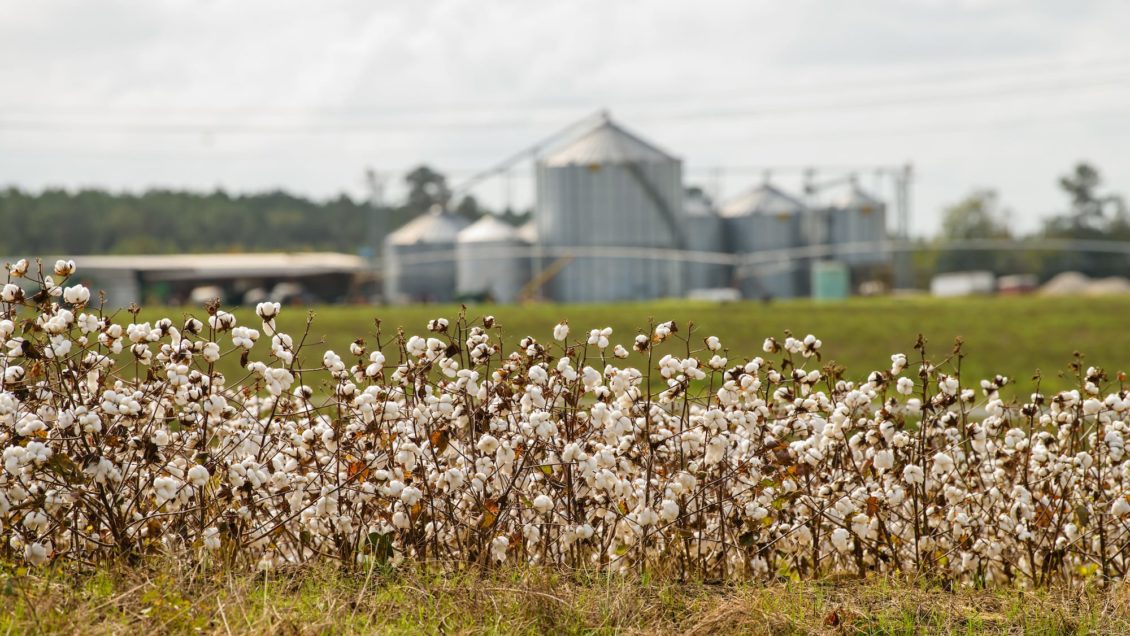A program designed to guard against a pest that could devastate the South Carolina cotton crop just got cheaper and easier for the farmers whose crops it aims to protect.
The per acre assessment charged to cotton growers to fund the South Carolina Boll Weevil Eradication Program has been reduced to $1.25 from $1.75 and could save the state’s cotton growers an estimated $132,234 in just one year, based on 2022 acres grown in the state. Cost savings from the modified program will be passed along to growers over subsequent years.
“Any time we can save farmers money without reducing the effectiveness of our programs, we’re going to do that,” said Steven Long, director of Clemson’s Department of Plant Industry.
In addition to the reduced fee, the state will participate in a new pilot program designed to reduce the trapping footprint without lessening the effectiveness of the program.
Traps will be set within one mile of cotton fields rather 0.5 miles and will be installed 30 days later in the growing season. The traps will be monitored every four weeks rather than every three weeks and will be removed when no food is available for boll weevils in the field.
“The new protocol will slightly reduce the number of traps but maintain enough proximity to cotton fields and still be an effective monitoring program. Traps will be put in easily accessible areas. The time traps are in the field and checked will be reduced a little, but that difference should not change the effectiveness of the program,” said Jeremy Greene, Clemson University Research and Extension entomologist.
South Carolina is part of Southeastern Boll Weevil Eradication Foundation (SEBWEF), which includes South Carolina, Florida, Alabama, Mississippi, Tennessee, Missouri, North Carolina and Virginia.
While some people think the boll weevil is a problem of the past, Greene said the insect still infests cotton at the southern tip of Texas, as well as Mexico, Central America and South America, and needs to be taken seriously.
“The boll weevil is the most devastating insect pest of cotton. Profitable production of cotton in the USA is not possible with the pest broadly infesting the crop. We must keep monitoring and fighting this pest at any buffer zone — currently southern tip of Texas — where the insect still occurs in the USA,” Greene said.
Greene publishes a weekly newsletter during the summer months that includes timely information about insects important in cotton and soybeans. To subscribe, email greene4@clemson.edu.
Drake Perrow has been farming cotton in South Carolina his entire life. He’s a partner in Perrow Farms which grows cotton, peanuts and corn in the Cameron Community on land that is part of a land grant established by the King of England in 1737. He’s also part owner of Cameron Cotton & Seed Co. and owns Crop Companions Inc., an agricultural consulting business. He was named 2020 Syngenta Cotton Consultant of the Year.
He can remember the days when the boll weevil was wreaking havoc in cotton fields throughout the Southeast and South Carolina, and farmers had to spray pesticides 20 times per year.
“I can remember when I started scouting cotton, boll weevils were the biggest challenge to growing cotton. You would walk down the middles of the rows and see dead squares that had fallen off everywhere. Those squares had been damaged and the females had laid their egg in that square. In most cases once cotton started putting on squares, farmers were spraying every five days and even spraying that often many would still escape,” Perrow said.
While the boll weevil has been beaten back to two counties in South Texas, Perrow worries that it wouldn’t take much for the pest to be reintroduced to South Carolina.
“If a producer bought a cotton picker from that area, there could be some weevils catching a ride. We have rules that any piece of equipment coming into this state be cleaned and disinfected so that should not happen. But it did happen one time, and it took three years to eradicate a small area. My biggest concern is we have a new generation of cotton farmers who have never seen a live weevil and surely have not seen the devastation they can do,” Perrow said.
According to U.S. Department of Agriculture National Agricultural Statistics Service, South Carolina harvested 265,000 acres of upland cotton in 2022 with a value of $248 million. Cotton trailed only grain corn in production and total value in the state.
Get in touch and we will connect you with the author or another expert.
Or email us at news@clemson.edu

